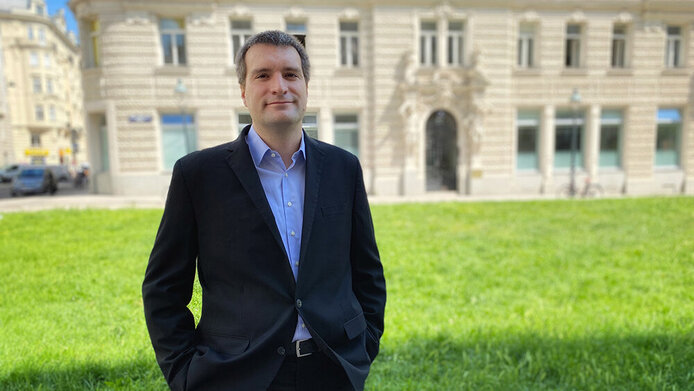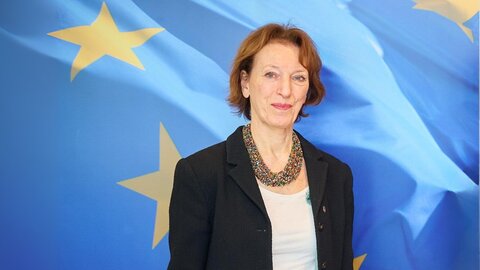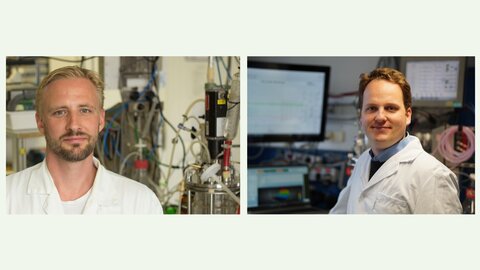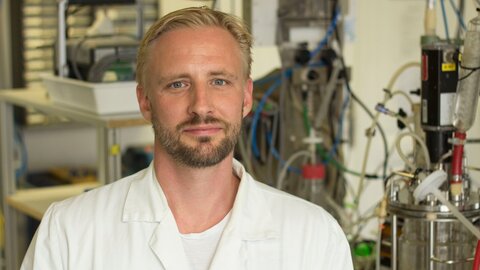A new math approach may help us understand black holes better

You are working on the use of metric geometry in Einstein’s general theory of relativity. Can you briefly outline this field of research?
Clemens Sämann: The theory of relativity is formulated in the language of Lorentzian geometry, which is particularly well suited to representing a four-dimensional space-time construct. After more than 100 years, there are still new discoveries to be made that prove Einstein correct, for example, the black hole in the center of our galaxy, which the Event Horizon Telescope radio telescope network only recently managed to image. Mathematically, however, there is still much to be done. Especially when it comes to black holes, the differential equations in relativity theory are no longer practicable when the space curvature - mathematically speaking - becomes infinite and leads to a singularity.
Another approach is needed to be able to describe the curvature of space. There is, however, another field of mathematics that is well suited to the task: metric geometry. We were the first to come up with the idea of applying this approach – which had not yet been used for this purpose – to the concepts of relativity. This connection has the potential to open up a different perspective on the geometry of space time and consequently of black holes.
Clemens Sämann completed his PhD in mathematics at the University of Vienna in 2015, followed by his post-doctoral thesis in Vienna in 2019. He was a postdoctoral researcher at the University of Vienna until 2022 and spent two years at the University of Toronto as part of the FWF’s Schrödinger Program. Currently, Mr. Sämann holds a position as Postdoctoral Research Associate at the Mathematical Institute of the University of Oxford.
What is the idea underpinning the research?
Sämann: Metric geometry describes a space in terms of the shortest paths between various points. These distances change with the geometry of a space. But in the theory of relativity these distances are not relevant. The speed of light is constant, which results in a contraction in the length of these paths. In other words, if an observer is traveling at a high speed, the observed distance changes. Distances can no longer be considered absolute. And yet we are now attempting to apply the philosophy of metric geometry to relativity regardless.
The keys to doing this are the so-called time distances that the theory of relativity describes. These are not the shortest, but rather, in a manner of speaking, the longest paths between two points positioned relative to each other within a four-dimensional space-time. The concept of time distance runs counter to our intuitive understanding of space. For example, detours in space-time which require energy to be expended make distances shorter, not longer. Nevertheless, the concept of time distance can serve as a link to metric geometry.
What are you expecting to find?
Sämann: A jumping off point for our research is the work Roger Penrose did in 1965. His singularity theorem demonstrated that a mathematically precise definition of a singularity is different from a physical black hole. He received the Nobel Prize for his findings in 2020.
For example, it may be the case that the curvature of space does not become infinite at all in the singularity, but that there is an actual “hole” in space-time at the center. We hope that our approach can help us find out more about the gap Penrose identified between physics and mathematics.
So what are the first steps in your project?
Sämann: I have a temporary position at Oxford University in the UK atthe moment. But the START award has now put everything on a new footing. I am hoping to get an offer for a permanent position in Vienna. My former group at the University of Vienna would be the ideal environment for starting my own research group. I also have a couple of potential postdocs in mind that I would like to recruit for my group.
What motivates you in your day-to-day research?
Sämann: Everyday mathematics is very pencil-and-paper oriented. Over fifty percent of the work takes place offline. In addition, exchanging ideas with colleagues is very important to make sure you stay on course. The work is incredibly exciting. In theory, you can discover something fundamentally new completely on your own – the theory of relativity is the best example of this kind of individual effort. On the other hand, if an idea doesn’t pan out, you have to come to terms with it on your own. You need a mindset that keeps you from giving up even after hitting a roadblock. Sometimes taking a step back from your work is also important for coming up with new ideas. As a mathematician, my approach is to question everything and delve down to the smallest detail of a problem. It is essential for me to flesh it out completely.
About the project
The project “Lorentzian Length Spaces” is aimed at establishing a new mathematical approach for Einstein’s General Theory of Relativity. Using a new method, the metric geometry approach – previously not applicable to relativity theory – is to be made suitable for use in describing space-time, thereby perhaps providing new insights into phenomena such as the curvature of space or black holes.
The FWF START Award
The START program of the Austrian Science Fund (FWF) is aimed at outstanding young researchers, giving them the opportunity to plan their research in the long term and with a high degree of financial securityIt is endowed with up to €1.2 million and is one of Austria’s most prestigious and most highly endowed awards alongside the FWF Wittgenstein Award.





